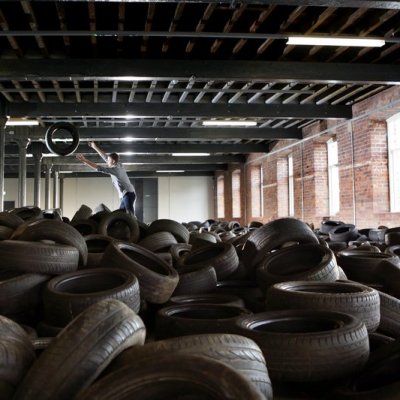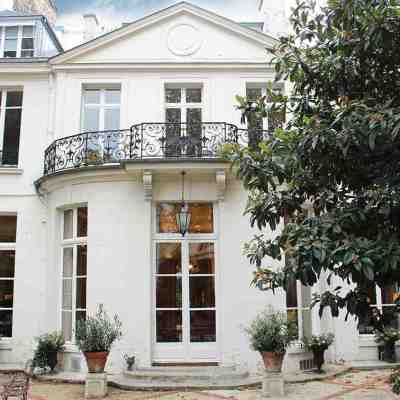From the May issue of Apollo: preview and subscribe here
The restoration and conservation work at Chartres Cathedral, overseen by the French Ministry for Culture, is proving to be a controversial project. Are critics of the scheme, which involves the repainting of the interior to match the original colours and the cleaning of the stained glass windows, being overly conservative? Or is the restoration damaging the historic atmosphere of the building?
Yes: Jeffrey F. Hamburger
Some years ago, I received an irresistible invitation from colleagues in England. The high vaults of the choir at Chartres were undergoing restoration: would I like to join them in climbing the scaffolding to view the work first hand? I knew, in the abstract, of the original polychromy that had hidden the raw masonry from view; in the 1980s, a German art historian, Jürgen Michler, had demonstrated beyond doubt that the church’s interior was originally painted in a light ochre, with regular false masonry added in white, a scheme that often bore little resemblance to the coursing of the underlying ashlar stonework. I would also be able to view the famed stained glass, which was being restored at the same time. I immediately booked a ticket and flew to France.
Nothing prepared me for what I saw. The restorers had removed countless small strips of leading (inserted to repair damage from wind and hail), which had broken up the contours of figures, rendering many of them far less legible. I was no less intrigued by the team of restorers who were at work on the masonry between the windows. In some areas, they were using devices akin to vacuum cleaners to remove a thick fuzz of dust and grime as much as several inches thick, through which one could clearly make out the underlying painting. Once the loose grime had gone, the surfaces were carefully cleansed, to reveal that much of the painting had survived intact. In fact, two layers survive, one from the 13th century, the other from the 15th century. The restoration of the false masonry proved more of a revelation than a restoration, let alone a recreation.
Objections have been raised about the recent and ongoing restoration and conservation work: critics, such as Martin Filler writing in the New York Review of Books, say that the cathedral has lost its lugubrious, romantic air; the gloom of centuries of smoke, lit by candles, has been dispelled. However nothing can make good on the fact that the celebrated Chartrian blues have been permanently corroded by air pollution; this has required an outer layer of protective transparent sheathing. As a result of cleaning, the glass is now brighter and more luminous than many remember it. Less important than the impression left by the glass in isolation is its effect within the edifice as a whole, in which the restored fictive masonry clarifies its brilliance. No longer do the windows shine like beacons in the darkness: they are legible, as they were intended to be.
Not all restorations are as felicitous as that at Chartres. Restoration always requires careful judgement; it is by no means mechanical. Recent work at St Sernin in Toulouse stripped the building of all modern accretions, leaving only the bare stone in lieu of the perceived excesses of 19th-century painting. In this case, it might have been better to leave the painting, which was in some sense truer to the original than the raw masonry and itself a part of the historical record. Exposed stone may appeal to a modernist aesthetic, and to scholars whose work focuses on the traces of the mason’s tools, but it has little to do with medieval conceptions of sacred space. In contrast, at Chartres, it was decided to clean the faux marbling in the choir, which was added in the 17th century. A case can be made that this feature, which is indeed jarring to modern eyes, at this point represents part of the historical monument, no matter how much it distorts the original medieval arrangement. The same, however, cannot be said for an unsightly, dangerous accumulation of carbon particulates and dust that coated the interior, doing damage to its surfaces as well as obscuring the building.
Similar objections were raised when the Sistine ceiling was cleaned; the colours, it was protested, were garish. The restoration, however, shed new light on the painters, known as ‘Mannerists’, who went to school in the Chapel. The colour palette of these artists did not represent a departure from, but rather a continuation of aspects of Michelangelo’s work. Similar insights will emerge from the work at Chartres. Not far from the cathedral, the neglected church of St-Père-en-Vallée, which, like Chartres, was also destroyed by the fire of 1194 and rebuilt in the 13th century, displays a set of stained glass windows dating to about 1240–1300. Large panels of grisaille glass, designed to let in more light, stand between the coloured panels with figural imagery. The two churches – cathedral and abbey – need no longer be seen as worlds apart. In this and in every other respect, the restoration at Chartres makes sense.
Jeffrey F. Hamburger is the Kuno Francke Professor of German Art and Culture at Harvard and a member of the advisory board of the American Friends of Chartres.
No: Adam Nathaniel Furman
In her book, The Future of Nostalgia (2001), the critic and artist Svetlana Boym identifies two kinds of nostalgia, both of which are the flipside of modernity. ‘Restorative nostalgia,’ Boym writes, ‘puts emphasis on nostos (returning home) and proposes to rebuild the lost home and patch up the memory gaps. Reflective nostalgia dwells in algos (aching), in longing and loss, the imperfect process of remembrance. The first category of nostalgics do not think of themselves as nostalgic; they believe that their project is about truth.’
Chartres, which is perhaps the greatestof the Gothic cathedrals from the astonishing 12th- and 13th-century Île-de-France building boom, is in the middle of an extensive programme of restoration that has pitted these two sensibilities against one another. The restoration aims to remove 800 years’ worth of accumulated grime and reinstate a decorative scheme that was discovered under many layers of paint and dirt. The caking of candle wax, paint and soot, including damage from a fire in the 1970s, was so textured and dark that the surfaces of the Cathedral were almost uniformly mistaken for exposed stonework. And this dark interior provided a stark contrast to the dazzling radiance of the stained glass. The layers of decorative schemes, alterations, damage and grime have nothing in common with how the space looked on the day it was consecrated; they told a story about the intervening time. The aesthetic consequences of its restrained decay formed ‘our’ version of Chartres – a cathedral that provided something much needed after the Industrial Revolution: a place to reflect on the distances that both separate us from, and connect us to our past.
The restored ambulatory and choir areas, soon to be followed by the transepts, crossing and nave before 2017, look brand new and bright. The beige ground is covered in white lines tracing mortar joints that don’t always follow the actual coursing below. (This is itself an interesting example of how perceptions of the interior trumped any fidelity to material fact even at the time of the Cathedral’s opening.) The effect is impressive for a moment – and then you remember you are in Chartres. As the journalist John Lichfield vividly put it in the Independent, ‘Imagine how you might feel if your great, great, great, grandmother was suddenly made to appear 20 years old again.’ The restorers intend that the Cathedral be experienced as it was originally intended. That intention is an impossibility, and the presumption that it can be achieved is a dangerous one. In the sciences, practitioners posit a theory, which may be generally accepted for a period, but as soon as experimental results disprove it, a new theory is proposed that explains the data. Truth evolves. The problem with reconstructing supposed origins in a restoration, is that a theory, based on necessarily fragmentary and imperfect evidence, is presumed as a final truth. All evidence to the contrary contained within the accretions of time and in the gaps in the earliest material, is wiped out and lost forever as something you can experience. In these instances truth may not evolve, it is arrested, and visitors are prevented from forming their own ideas about the building, as they might when all the increments of 800 years are there for them to interpret. The information about the original colour-scheme could be presented in a guide as text, and become one layer out of many. But when a restoration erases everything else, there is only one manner in which the building can be understood. It is a form of historical absolutism.
I am open to reconstructive nostalgia in architecture when the building is new. Nobody pretends that the full-scale replica of the Parthenon in Nashville is actually the original Parthenon. There is an honesty about internal paradoxes in that act: everyone is aware of the edifice’s newness and that its antiquity is an illusion. A collective act of imagination is required to conjure up the history it refers to, whether it be Disneyland (the materialisation of fictional histories) or the Cathedral of Christ the Saviour in Moscow (the reinstatement of a previously erased past). However a restoration that eliminates the patina of history, and reinstates an illusory ideal moment in the past – while using the rhetoric of scientific and historic accuracy – is an act of destruction dressed up in good intentions.
We are all poorer for the restoration at Chartres, and have lost one of our greatest spaces to think about the passing of time and of things.
Adam Nathaniel Furman is a designer and the holder of the UK Rome Prize for Architecture 2014–15.
Click here to buy the latest issue of Apollo
Lead image: used under Creative Commons licence (CC BY-SA 3.0)



